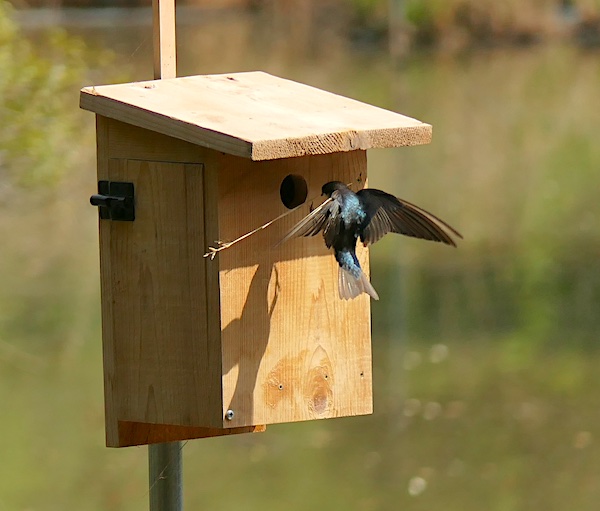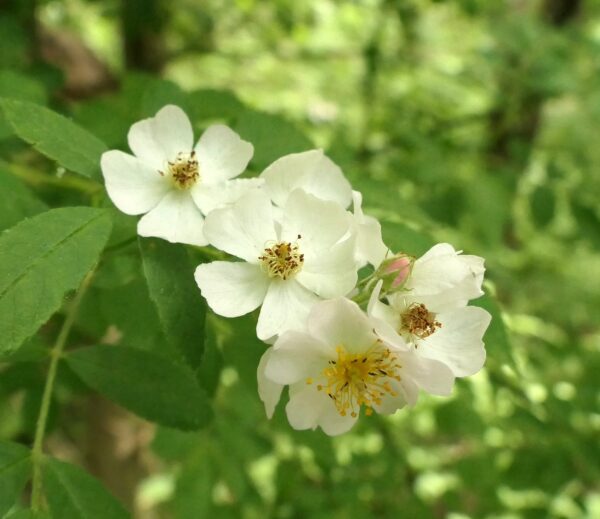Top Photo: Family of geese pass behind recently fledged family of northern rough-winged swallows The young swallows are watching their parents fly overhead, and begging for food.
Each year a family of northern rough-winged swallows brings their newly fledged young into our wetlands for training. The adults want the young birds to hit the skies and catch their own insects on the wing. The fledglings seem more interested in begging for handouts than learning how to hawk insects. But eventually they get it, follow what their parents are doing above and around them and soon are up in the blue with their deft and agile instructors.


The rough-wings arrived a few days earlier in the spring than the tree swallows that have shown interest in our nest box (installed in the wetlands just for them). We watched the tree swallows, or at least one of them, bring nest material into the box in April.

I can’t say for sure, but it seems there are eggs in the box and perhaps incubation of those eggs is happening as I write. But since the box is installed over water we can’t simply walk out, pop open the inspection door and have a look inside. We’re going to have to wait to see what’s going on in the box. We’ve seen no feeding activity so there doesn’t seem to be nestlings, yet.
Swamp rose and elderberry are in bloom.



The swamp rose can be seen from the floating walkway in Explore the Wild, up close (you can touch it). The multiflora rose is no longer blooming. You can see in the image why it’s called multiflora rose. The multiple blossoms are a major differentiating characteristic between the native and non-native roses.
The elderberry can be seen from the floating walkway but must be appreciated from afar, it’s on the opposite side of the pond with no path access.
Take a hike outdoors and let us know what you see.
Ranger Greg